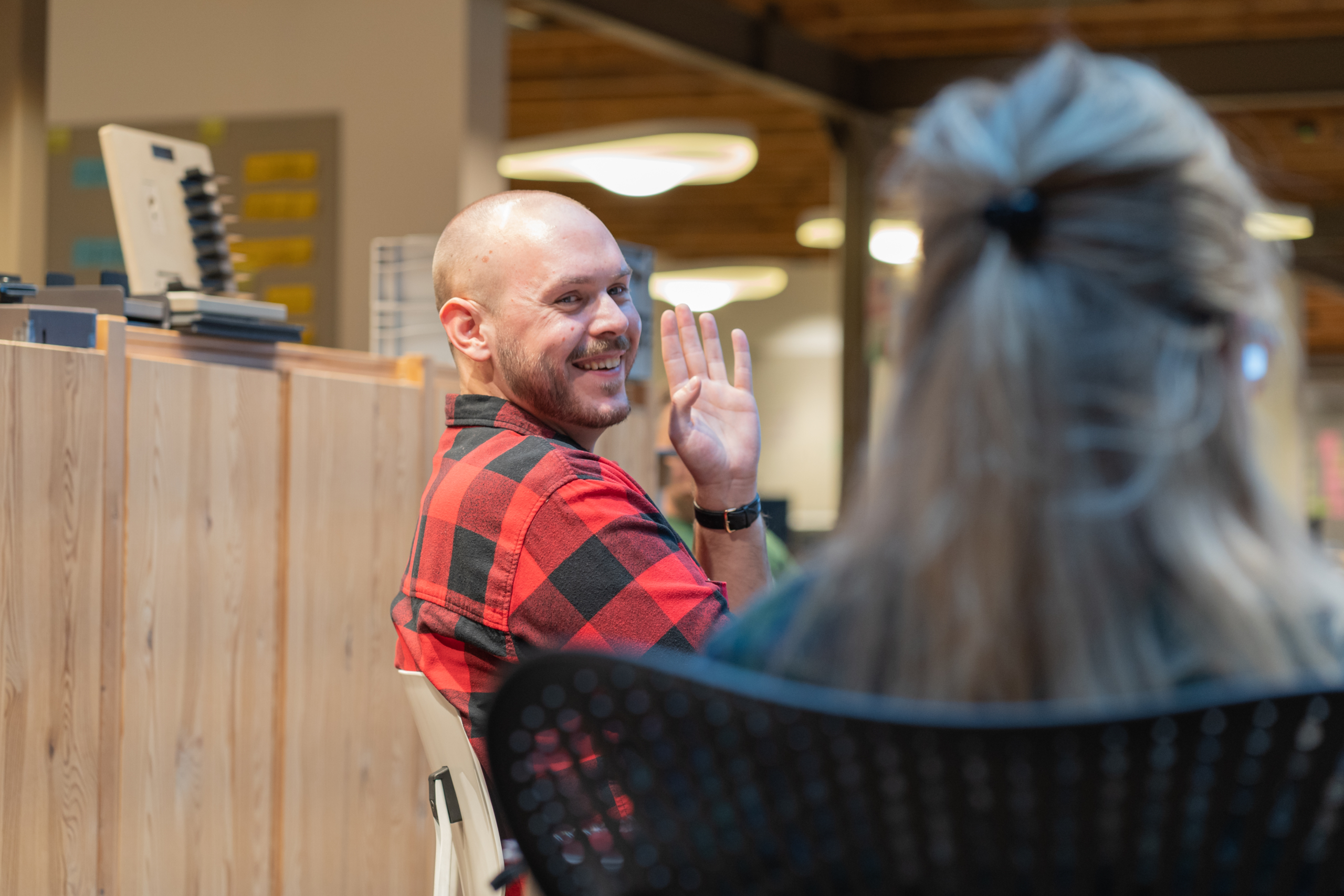
Why we chose Holacracy at De Warren, and how that is working out
De Warren is a housing community in Amsterdam, that moved into its brand new wooden building in February 2023. In the years leading up to finally moving in, one of the (many) projects we worked on, was: figuring out how to live together: how do we manage the shared spaces? How do we organize cleaning? How do we choose new inhabitants? And above all: how do we make decisions?
From the get-go, self-organization seemed a good fit, so with a team of people we delved into these questions and we quickly concluded that for a self-organized community, there are two main options to choose from:
- The ‘traditional’ approach, that has emerged in a community setting, originally in schools, but widely used in housing communities: Sociocracy.
- And the ‘modern’ option, that feels more business like (but is heavily inspired by Sociocracy): Holacracy.
It doesn’t matter all that much
When we looked into them, it turned out that the ‘variety within’ is much bigger than ‘the difference between’. Many forms of Sociocracy exist, and even within one ‘stream’, you have so many options that every instance will look different. And with Holacracy: even though there is only one constitution, the ways it is practiced look different in every place, and the structure can evolve to look like just anything. This means that: something that is practiced under the name of Holacracy in one place, can be called Sociocracy in another, while also: some versions of Holacracy look very different from what is also called Holacracy elsewhere. It’s a bit like this:

So in fact, it does not matter all that much where you start. Since both these systems are evolutionary in nature, you’ll find your way to a format that works for your context, wherever you start. But when you want to start self-organizing, that isn’t a very satisfying answer, because you do have to start somewhere. So below I’ll describe our reasons for choosing Holacracy as a starting point.
Answering all the meta-questions in one go
As newbies who had to make do without an external coach, we chose Holacracy because it offers a clear starting point, from where you can still go anywhere you like.
The alternative that we studied in some detail was Sociocracy 3.0, and even though it is very similar to Holacracy, there is a crucial difference in how it is offered: when you want to start implementing Sociocracy 3.0 you’re faced with 76 different patterns that you can elect to use or not. So in fact, you’re faced with 76 questions like these:
- Do you want to have a check-in at meetings?
- Do you want to split responsibilities all the way into individual roles?
- Do you want to use consent-based decision making?
- And if so, do you want to use that only for structural, or also for operational decisions?
- Do you want to use rep links?
- Do you want to have strategy meetings?
- Etc.
We had absolutely no clue how to answer all these questions up front.
How Holacracy helped to create clarity
Holacracy on the other hand, just tells you: start here. You will use check-ins, you will use this specific way of consent based decision making, just for governance decisions, not for operational ones, you will use rep links, etc.
This seems more restrictive, but in fact it isn’t, because it only says ‘Start here’, it does -emphatically- not say: ‘Stay here’. In fact, almost any difference you can find between a sociocratic option and a default holocractic option can be ‘evolved away’ if you will. You can make your organization run exactly like many sociocratic ones, without leaving the Holacracy constitution behind.
For instance: An important difference that is often mentioned between Sociocracy and Holacracy is the way that people are assigned to roles/circles. People will say: “In Holacracy, role assignment is done by one specific role: the Circle Lead, while in Sociocracy role assignment happens through a collective decision”. But that is only half true.. if you start with Holacracy, this is indeed by default the case, but nothing prevents you from changing it. It does not violate the constitution in any way to use elections to fill roles, and in fact: the lore around the constitution very much encourages you to change all the accountabilities of the Circle Lead into some kind of process. It is considered a sign of organizational maturity if role assignment, prioritization, etc, are anchored in a process, instead of lie with the Circle Lead. It’s just more common in sociocratic organizations to start out with a collective decision for this particular type of decision.
Our difficulty with answering all these questions for kicking off Sociocracy 3.0, is an example of a more general problem: in any self-organizing community you run the risk of getting stuck in the meta-questions: who gets to decide what kind of decision making we’re using? Or do we decide this altogether? And if so, what process do we use to make that decision together? (Et cetera..) Or you spend hours discussing in a meeting what the meeting format should be in the first place. This focus on the meta-decisions can grind the actual decision making to a halt.
The beautiful thing about Holacracy is that when you adopt the constitution, you nip this endless regression in the bud. You can still change a lot about the way you hold meetings or make decisions, but at least you now know how to go about making that change. The process for proposing changes, and making the decision is crystal clear, and that is a big relief.
How are we doing now?
It’s two years ago that we started thinking about and experimenting with Holacracy, but the real adventure is actually only half a year old. That is to say: we moved into the building with 50 people in February 2023, and only at that point did the entire organization switch to Holacracy. That’s not very long for an community where every member maximally spends a couple of hours a week, and everything is done on a voluntary basis. It means that change, or the development of habits and spreading of knowledge goes slowly. But we did achieve the following:
- There are clear roles and circles, and people know which ones they fill, or are a member of.
- We’ve had two general member meetings where we used Holacracy’s collective decision making process (with some adjustments for the size of the group) to establish parts of our House Rules. The best decision making format for this group is still in development.
- Bottom up initiatives get shape in new roles and circles (For instance: a new circle Sustainability with the roles FoodCoop and Compost). This still requires the help of the internal Holacracy coach, but the pathway is being found.
- The most central and active circle standardly uses the Holacracy meeting formats with biweekly Tactical meetings and occasional Governance meetings. And the members of this circle are really starting to love the formats!
- The role assignment process is in development. There is an ‘Effort Coordinator’ who talks to everyone once every quarter to discuss whether they’re happy in their roles, and whether they do too little or too much. Based on these conversations, this role proposes new divisions of role-filling, that is discussed with Circle Leads, and that everyone gets to respond to.
We’ll see where we go from here, but so far we’re not regretting the path taken.
Gerelateerde blogs
Bouwen aan een cultuur van eigenaarschap?
Ontgrendel een heleboel kennis! We hebben talloze blogs, artikelen, handleidingen en zelfs een boek voor jou! Of je nu je eerste stappen zet of de diepte in wil duiken, hier vind je wat je zoekt.






